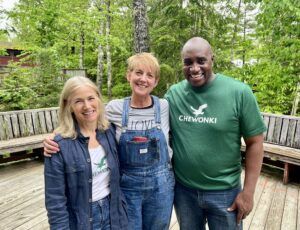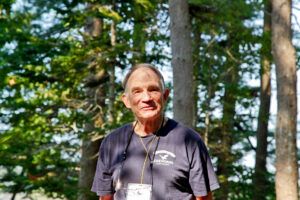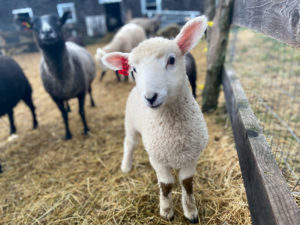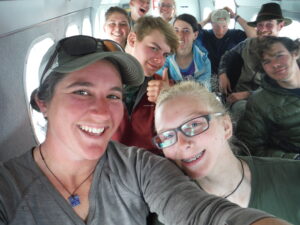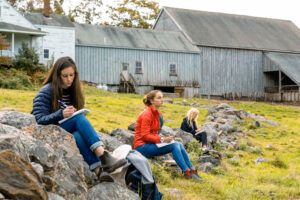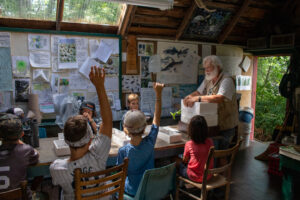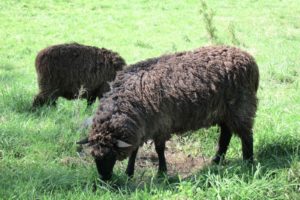Step Into Their Stories...
Reflecting on Light
by Megan Phillips, Chewonki Farm and Woodlot Manager
A line from a Michael Blumenthal poem has been rattling around in my head this week: “And now, I think I see it all in terms of light.”
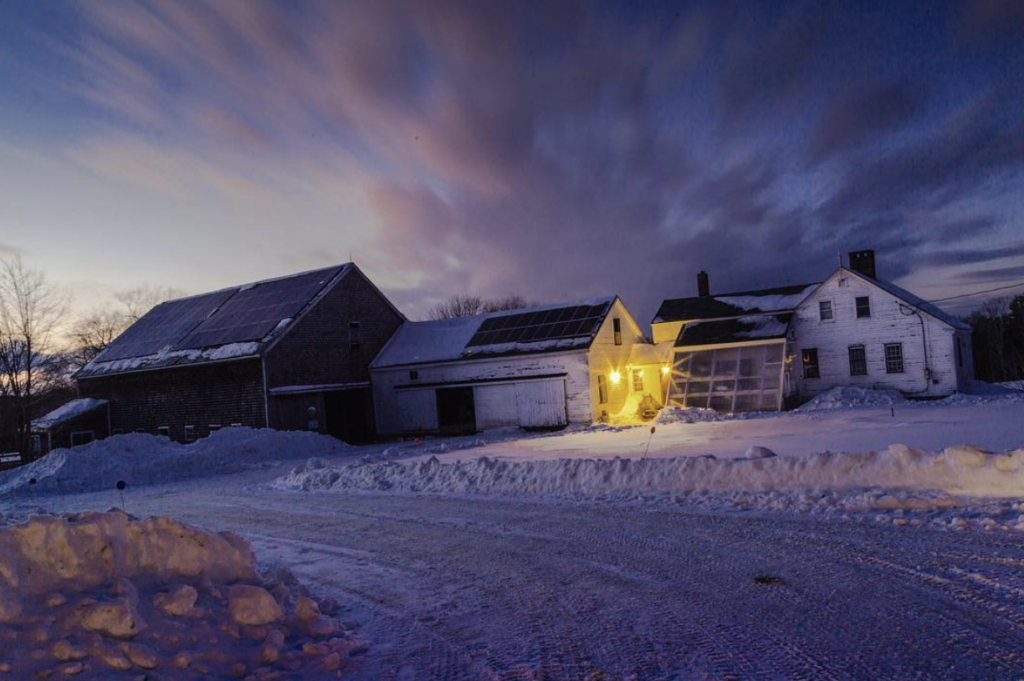
This season – fall-turning-winter – is defined by fluctuations in temperature (it has been both in the 70s and in the 20s in short succession in recent weeks) but by predictability in light conditions. Namely, there is less and less light every day as we slide towards the winter solstice. These days, the sunrise is framed out the east end of the barn during morning chores, and the sunset is framed out the west end during afternoon chores. The coming and going of the daylight bookends our workday: some days, I revel in the symmetry; other days, I grumble my way towards the house post-chores, wishing the use of a headlamp wasn’t wholly necessary by 4:30 pm.
I learned to love the dark season while living in Ester, Alaska for a couple of years before moving to Chewonki. There, three daily hours of daylight in the winter and 23 hours of light in the summer defined a dramatic seasonal pendulum swing that left me mostly happy but vaguely frenetic for all the well-lit months and a grateful part of a cozy collective outbreath all winter long. (Once, while driving in the early afternoon dark on a -20 degree January day, I flicked on the bright lights of my car to keep an eye out for moose on the road, and I thought about how helpful it would be to have a centralized bright light somewhere . . . like in the sky. I had forgotten that the sun existed. And I had invented the sun. But that’s another story.) In that grand seasonal shift of light and dark, I calibrated an internal balance each year that mirrored the external waxing and waning of light.

The Chewonki farm, in the midst of this largely forested peninsula, is a place of horizons, and I do see it all in terms of light. The sun is never particularly high in the sky these days, even at noontime, so our shadows are long and the light of the day has a certain golden quality to it that feels alive. Though I vaguely understand physics enough to know that when I see an object, I am seeing the light reflecting off it, there is a particular way that light seems to suffuse objects this time of year, so that they appear to glow from both the outside and the in. This felt true in the chilly hayloft this week where Semester 69 students gathered for our final Farm and Food Systems seminar: shafts of light shot through windows and openings in the west side of the barn in patches whose definition changed as the clouds marched across the sky, and all around me – the hay, the students, their stories – seemed producers, not mere reflectors, of the light. There are color palettes unique to this season: the juxtaposition of yellow-green willow tree tips against the bruise-purple clouds always makes me want to knit a sweater of those colors. Would I glow like that when I wore it?
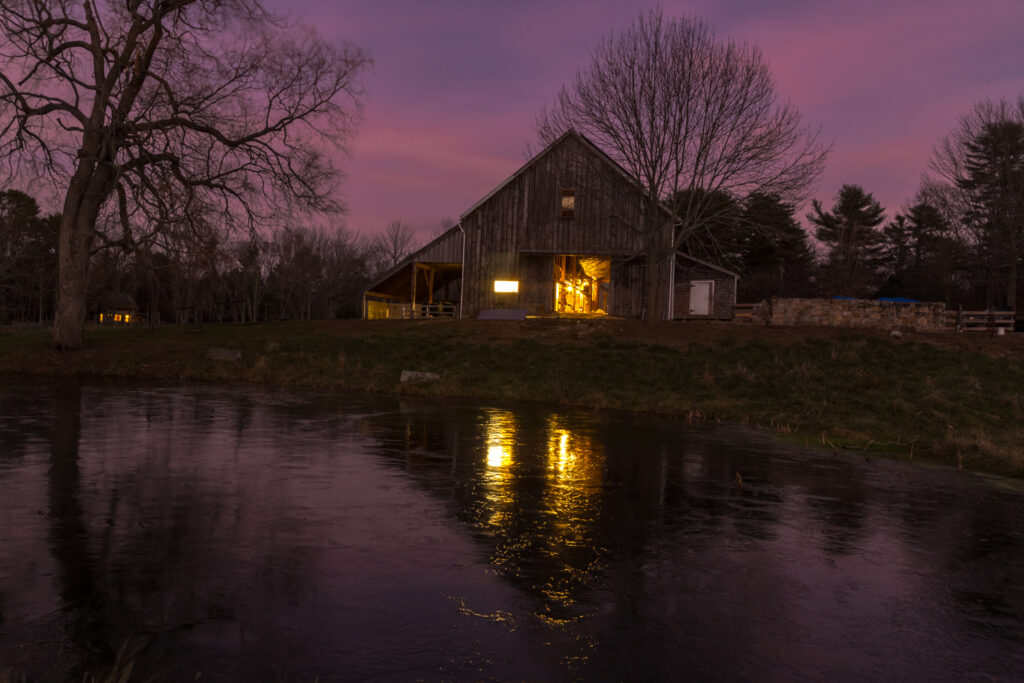
In more practical terms, the lack of light halts the growth of plants on the farm. The pastures stopped growing a long while back, and the livestock moved towards winter quarters and hay rations in the barn. We’re wrapping up the last of the harvests from the plastic houses on the farm these weeks. Those frost-tolerant plants overwinter in place and enjoy the occasional above-freezing day throughout the winter when sunlight bounces around and becomes heat energy inside the plastic walls, warming the air and soil to temperatures that will seem balmy compared with the outdoors. The plants will not, however, actively grow again until the daylight lengthens in the late winter. Oh, how sweet and coveted those greens will be in March!
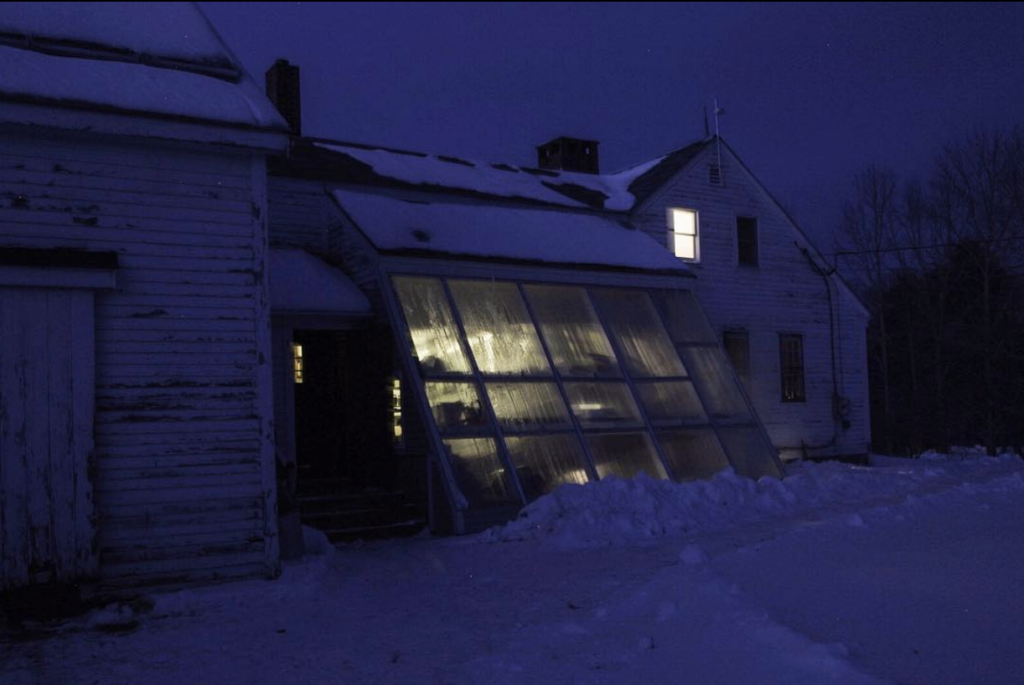
I am not those plants, in a state of rest all winter. The low light time is an active one for me, both on my external landscape and within my internal one. I will move in insulated boots and overalls or on cross-country skis through these short days, and I will consciously seek space for rest and repair and connection in this season too. Perhaps it’s too simplistic to say that I see it all in terms of light, because that implies that the dark is lacking something. Dark is not simply anti-light. Farmer and poet Wendell Berry wrote that “To know the dark, go dark. Go without sight, and find that the dark, too, blooms and sings.” Here’s to the light and the dark both in this season of less and plenty. May you and I find what we need in each.
